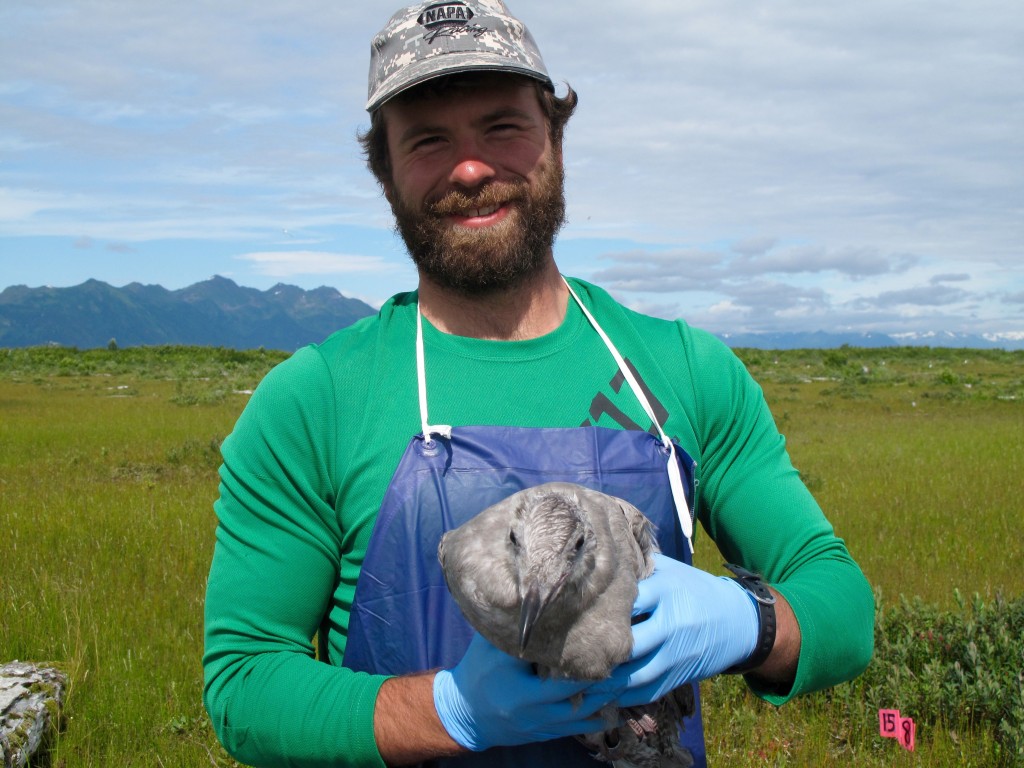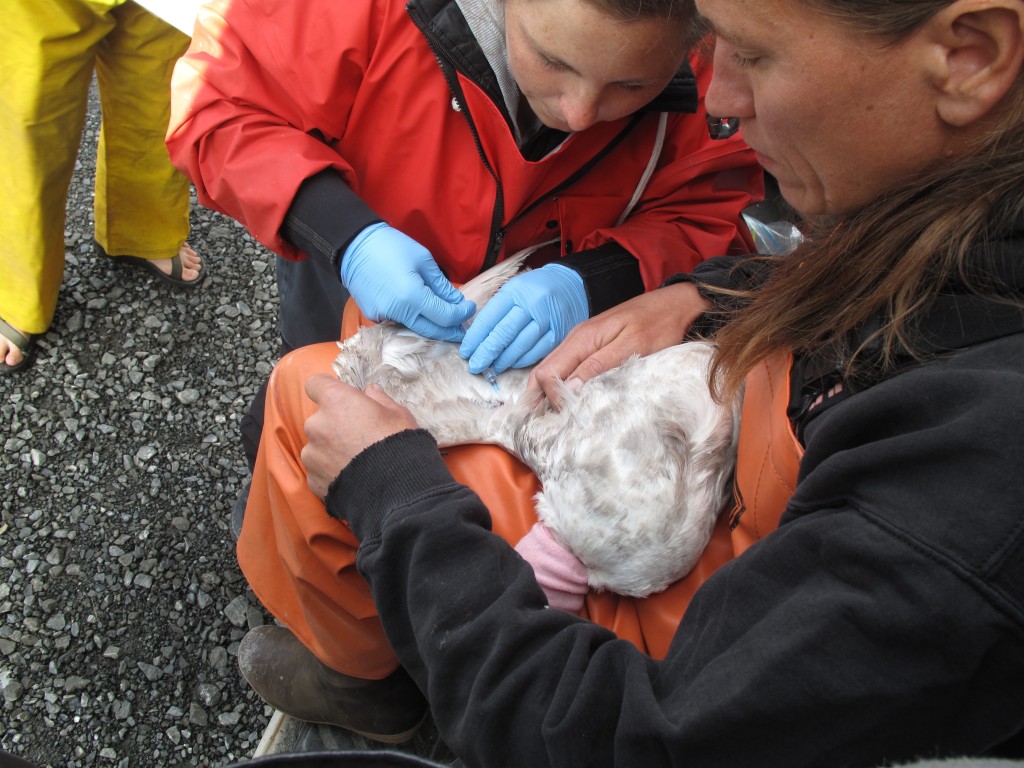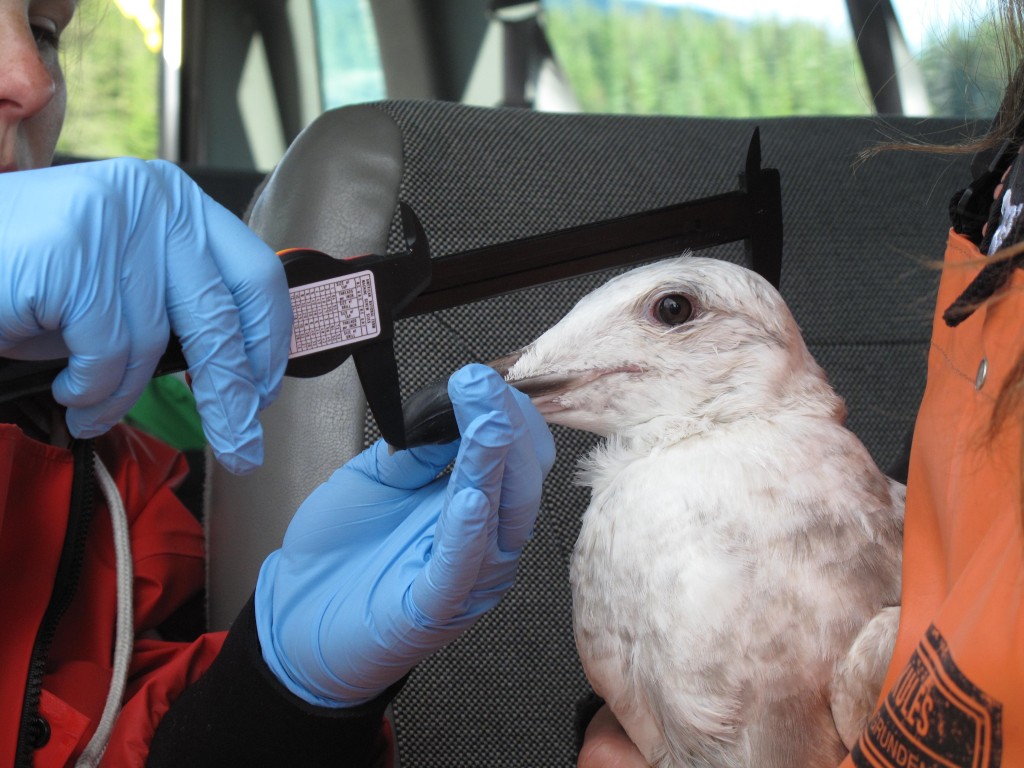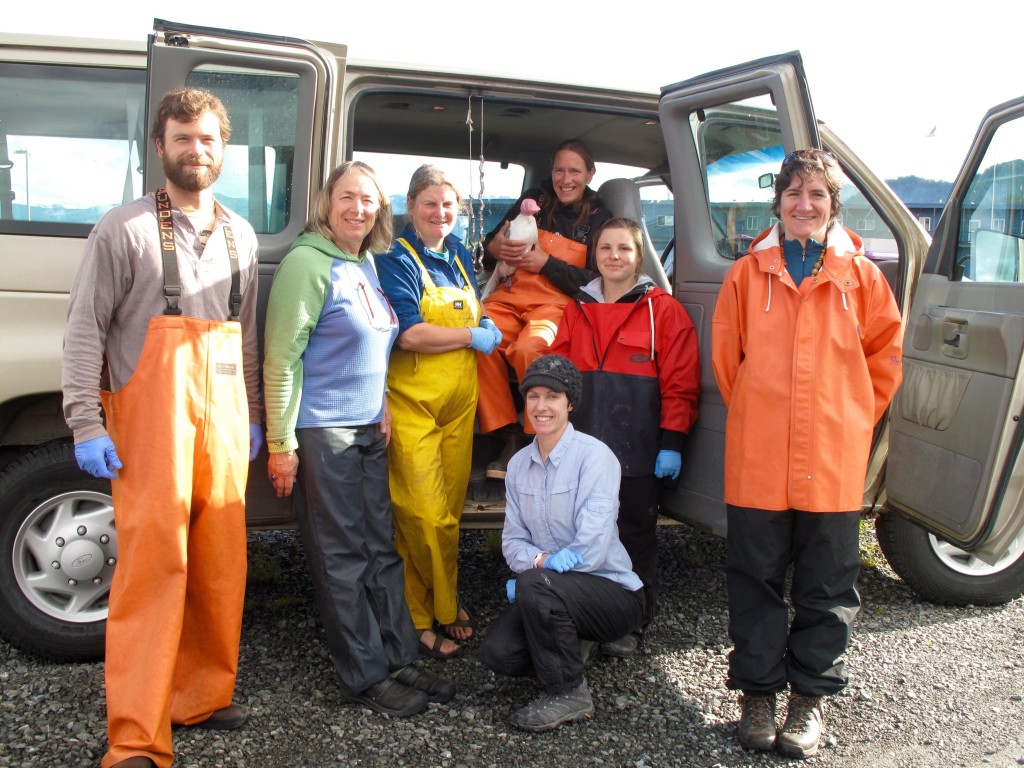Gull Study

Biologists from the PWSSC and Tufts University are working to better understand how the distribution of gulls changes in response to salmon processing. Gulls are captured near the city dock using a net launcher and marked with colorful leg bands to assess connectivity with the Egg Island breeding colony and larger-scale migration patterns. Swabs and bloods are collected to test for avian influenza (aka ‘bird flu’) that can spike in the population after gulls have fledged from the colony and congregate in large numbers at the docks. The study provides a unique opportunity to model how human activities (fishing, agriculture) may alter the behaviour of animal hosts with the goal of predicting when and how outbreak of zoonotic pathogens can occur. If you spot a banded gull, please send your report to Nichola Hill (nichola.hill@tufts.edu) or Mary Anne Bishop (mbishop@pwssc.org).
[This post has been updated to reflect current funding and affiliation. Formerly, collorabation was with MIT.]
 Trapping glaucous-winged gulls on Cordova’s Breakwater fill lot.
Trapping glaucous-winged gulls on Cordova’s Breakwater fill lot.
 Sean Lewandoski with a juvenile gull on Egg Island.
Sean Lewandoski with a juvenile gull on Egg Island.
 Anne Schaefer collects a blood sample, as Kirsti Jurica holds the gull still.
Anne Schaefer collects a blood sample, as Kirsti Jurica holds the gull still.






